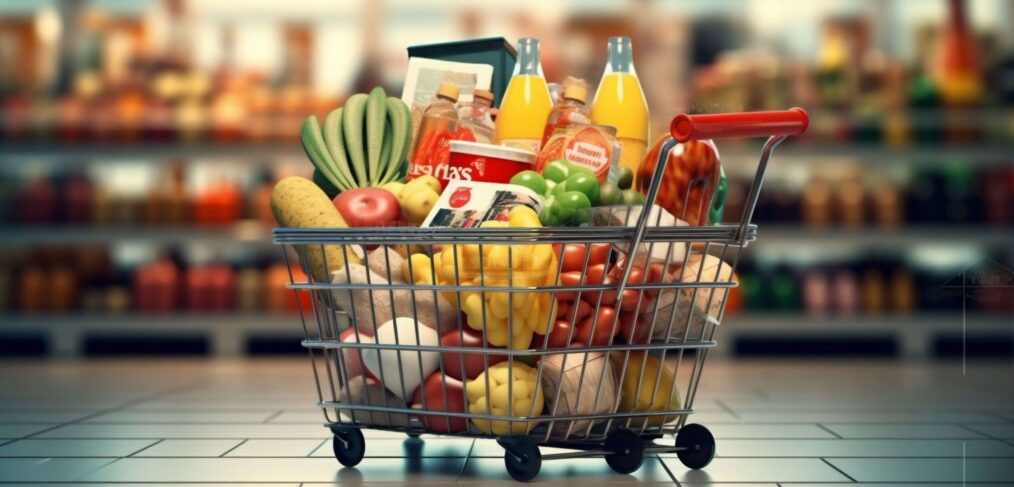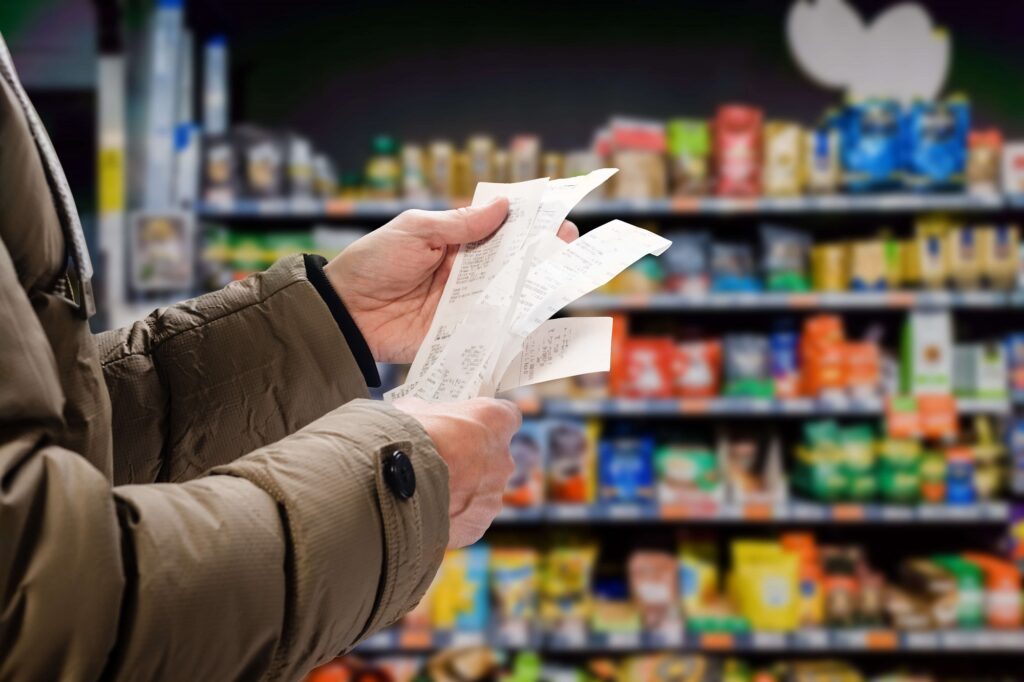
The State of The Canadian Grocery Sector and Consumer
Whether Canadians are filling up at the gas station, taking a well-earned vacation, or doing their weekly trip to the grocery store, they are feeling the pinch of inflation. Unlike what many politicians, especially those on the left of the spectrum may not mention, food inflation is a global phenomenon, not a “Made in Canada” problem. Increased competition will not lead to a reduction in food prices in Canada. Despite Aldi and Lidl – two of Europe’s biggest discount retailers entering the US market 10 years ago, the CPG (consumer packaged goods) US inflation rate in June of this year was 6%. Canada’s June CPG inflationary rate was 7%.[1] Rising prices are still plaguing many CPG departments in the United States. In Europe where Aldi and Lidl are dominant retailers, Europe’s CPG inflationary rate this August was 10.68% after reaching 19.19% in March.[2]

The Factors Affecting Food Prices
There are many factors beyond the control of manufacturers and retailers in Canada that are leading to our inflationary wars. They include by not limited to the:
- Supply chain issues
- Canada’s double carbon tax and its impact on freight charges
- Labour shortage
- Theft
- The Canadian Dollar
Last year I was invited to meet a woman from Colorado at Sial Montreal. She wished to launch her line of hot sauces into Canada. When I asked what her suggested retail was in the US, she informed me prior to the pandemic, $5.49. Upon conclusion of the pandemic, her suggested retail was $7.99. This is not “Greedflation”. This was the direct consequence of the pandemic. No manufacturer wishes to increase their retail selling price. It is their last resort or go bankrupt.
The Canadian Grocery Sector
Though foot traffic across the retail sector has increased by 55.7% for the 52-week period ending May’23[3], grocery sales across Canada are been driven by inflationary wars, not consumer demand. In the US, the grocery sector has experienced negative unit growth for the 14-month period, ending July’23.[4] As in the United States, Canadians are paying more and buying less. There has been a -2% annual decline in volume sales for the 6-month period ending April 2023.[5] Volume sales declined by a further 2% respectively during the months of June & July 2023.[6] Over the past year, private label sales in Canada have grown 12%.[7]
With the increase in food prices, Canadians are shifting where they purchase their groceries. Nationally 2023, 65% of the foot traffic market share has diverted to the club/mass, discount, and dollar stores[8]. Dollarama just announced a 19.6% increase for Q2 FY24 sales,[9] and Costco Canada just announced 7.4% comparable sales increase for Q4 FY23.[10]
The Canadian Grocery Consumer
Canadians are seeking the best deals possible. For instance:
- (79%) have changed their buying habits by seeking out deals or reducing their overall spending, [11]
- 61% have switched to private brands when their budget is tight. [12]
- 67% are more willing to compromise on the quality of certain products if it saves them money, [13] and
- 70% say discounts are more important to them now than a year ago. [14]
Environics Analytics identified 5 shopper groups as part of their study of the Canadian grocery landscape.[15] Brands would be wise to understand which consumer sector their target audience falls into.
- Discount shopper: 7M visits per week. Blue collar worker. Young to middle age with young family.
- Multicultural shopper: 700K visits per week. White collar worker. Multi-family households.
- Conventional shopper: 13M visits per week. White collar – management. Couples with older children.
- Club / Mass shopper: 12M visits per week. White collar worker with young kids.
- Dollar store shopper: 4M visits per week. Blue collar worker with young family.
Canadian Brand Purchasing Motivators
To no surprise, affordability / lower price is Canadians’ number 1 motivator for purchasing a brand:[16]
- Affordable /lower prices: 21%
- Healthier options: 14%
- Trusted and familiar brand: 13%
- Guarantees (safety / hygiene): 13%
- Environment friendly / sustainable:9%.
As part of their study, Environics Analytics revealed all shopping groups are price conscious, and the conventional shopper / club and mass shopper is the most health conscious. (Note: A summary of Environics Analytics study is posted on our website: www.fooddistributionguy.com / grocery insights – The Canadian Grocery Landscape).
A recent study undertaken by Nielsen IQ found that 78% of consumers say that a sustainable lifestyle is important to them,[17] and despite the inflationary wars:
- The projected 5-year compounded annual growth rate for sustainable based products is 9.48%, almost double that of conventionally marketed goods which has a growth rate for the same period of 4.98%.[18]
- 28% of all consumers are willing to pay more for environmentally friendly products. 49% of Gen Z and 48% of Millennials are willing to pay a premium price for such products.[19]
Food Distribution Guy’s 3 Brand Implications – Sales Perspective
- Brands must have a distinct target audience and an understanding of which Environics shopper group they fit into.
- With channel shifting, brands would be wise to fulfill a multi-channel strategy and confirm they are competitively priced.
- With ongoing wallet shifts to private label, imperative consumers love the taste of the brand, they perceive great value for their purchase, and it fulfils consumers healthier lifestyle.
I leave you with this quotation:
“National brands will need to monitor price gaps and focus on unique product attributes and innovation that justify price premium”.
Carman Allison, VP Sales Consumer Intelligence, Nielsen IQ, 2023
References:
[1]Food Inflation Heat, Nielsen IQ, Carman Allison, July 2023
[2] European Union Food Inflation, www.tradingeconomics.com, August 2023
[3] Behind the Data, The Grocery Landscape in Canada, Environics Analytics, September 2023
[4] Food Inflation Heat, Nielsen IQ, Carman Allison, July’23
[5] Top 5 Savings Strategies, www.grocerybusiness.com, Carman Allison, August / September 2023
[6] Canadian Consumers are Buying Less but Paying More, www.financialpost.com, September 2023
[7] Salted and Savoury, www.westerngrocer.com, Robin Brunet, July / August 2023
[8] Behind the Data, The Grocery Landscape in Canada, Environics Analytics, September 2023
[9] Dollarma Sales Rise 19.6% in Q2 FY 24, www.retail-insight-network.com, September 2023
[10] Costco Canada Q4 Comparable Sales up 7.4 per cent, www.grocerybusiness.ca, September 2023
[11] Tight Budgets Leading to Spending Cuts, www.westerngrocer.com, July / August 2023
[12] Salted and Savoury, www.westerngrocer.com, Robin Brunet, July / August 2023
[13] Time to Tier Up, www.canadiangrocer.com, Joel Gregoire, June / July 2023
[14] Delivering Value to Shoppers Will Remain Paramount for Grocers, www.grocerydive.com, September 2023
[15] Behind the Data…The Grocery Landscape in Canada, Environics Analytics, September 2023
[16] Sustainability and Changing Consumer Perceptions, www.grocerybusiness.ca, April / May 2023
[17] Consumers Care About Sustainability and Back it Up With Their Wallet, www.mckinsey.com, February 2023
[18] Sustainable Products Took More Market Share Last Year, www.retaildive.com, March 28, 2023
[19] The State of Grocery In North America, www.mckinsey.com, September 2023





